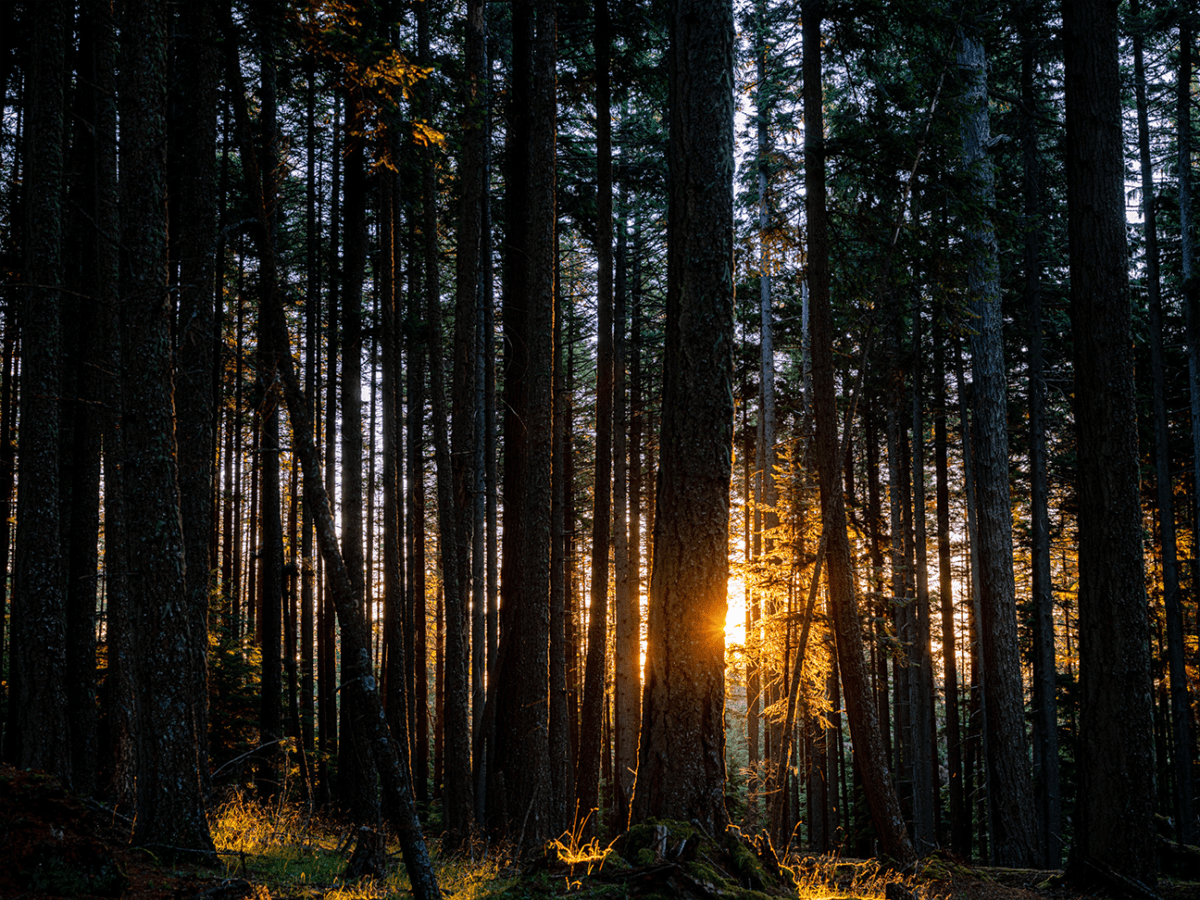
This article was originally published in our 2022 Fall Magazine
It’s no secret that there is a growing list of wildlife species that are vulnerable, threatened, or critically endangered in BC. Some species, including the greater Sage-Grouse, Hadley Lake Stickleback, and Dawsoni Caribou, have even gone extinct over the past few decades. But while it’s true that we’re losing biodiversity among wildlife, amphibians, and insects faster than we can categorize them, a parallel story is unfolding among plants and trees. Unfortunately, the latter story is often overlooked.
There are an estimated 60,000 tree species that we know of around the world. According to the IUCN Red List, approximately 8,000 species, over 10% of the Earth’s total, are globally threatened with extinction. At least 77 tree species have become extinct in the past 100 years, with many more no longer found in the wild.
British Columbia and Ontario have the most significant numbers of rare plants and trees in Canada. Many of these species are more common in the US and reach their northern limit along the Canada-US border. However, this is also where most Canadians reside, leading to a high concentration of agriculture and industrial activity in this area. Because of this, the natural habitat of many trees has been damaged or destroyed.
But why should we care about endangered trees?
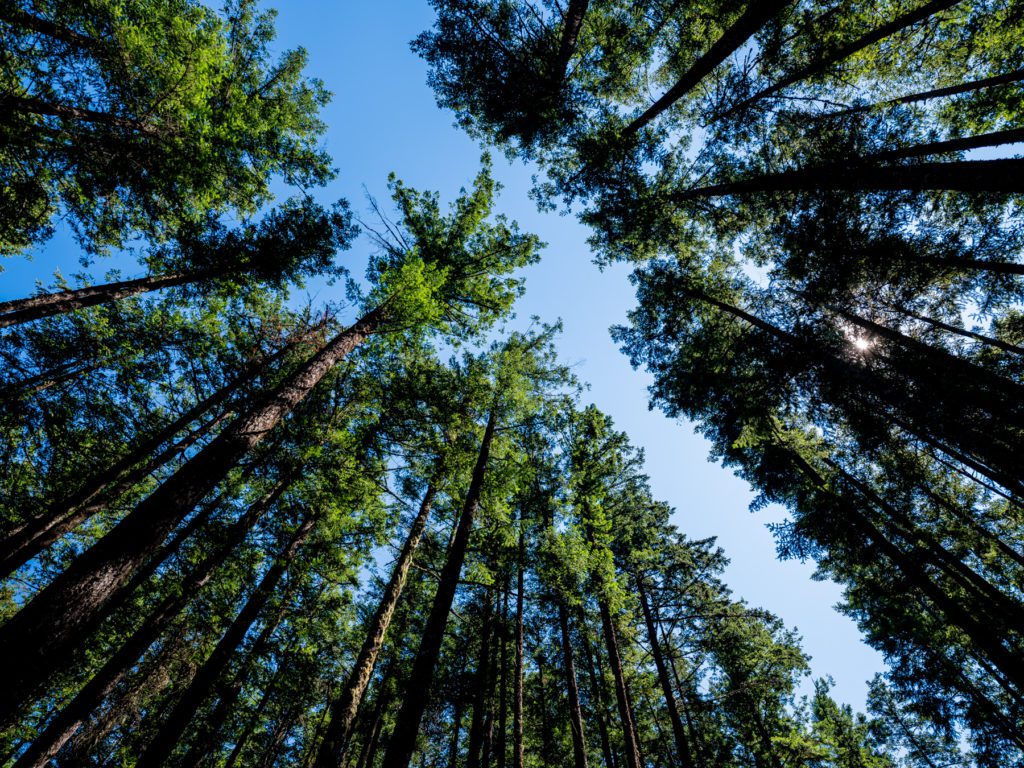
Money Creek, Saturna Island, British Columbia, Canada
Besides their cultural significance and natural beauty – which can’t be overlooked – trees benefit surrounding areas and act as meaningful anchors in an ecological niche. Without them, entire ecosystems could collapse. Trees serve as home, nutrient sources, carbon sequesters, oxygen producers, pollution absorbers, cooling agents, water filtration systems, and so on.
Trees are often less vulnerable to natural ecosystem disturbances. Hence, their continued health and life also allow many other life forms to regenerate and thrive – including the plants we humans greatly benefit from. But with rampant deforestation and exploitation, even these pillars of biodiversity are in trouble.
While we can’t bring back trees from extinction, we know that land conservation is critical in maintaining healthy forests, trees, and biodiverse ecosystems. This is why The Nature Trust of BC needs your help to continue protecting precious land. When we allow nature to thrive, it benefits both people and the planet.
These are the endangered trees you can find here in BC.
Whitebark Pine (Pinus albicaulis)
Blue-listed taxon in BC
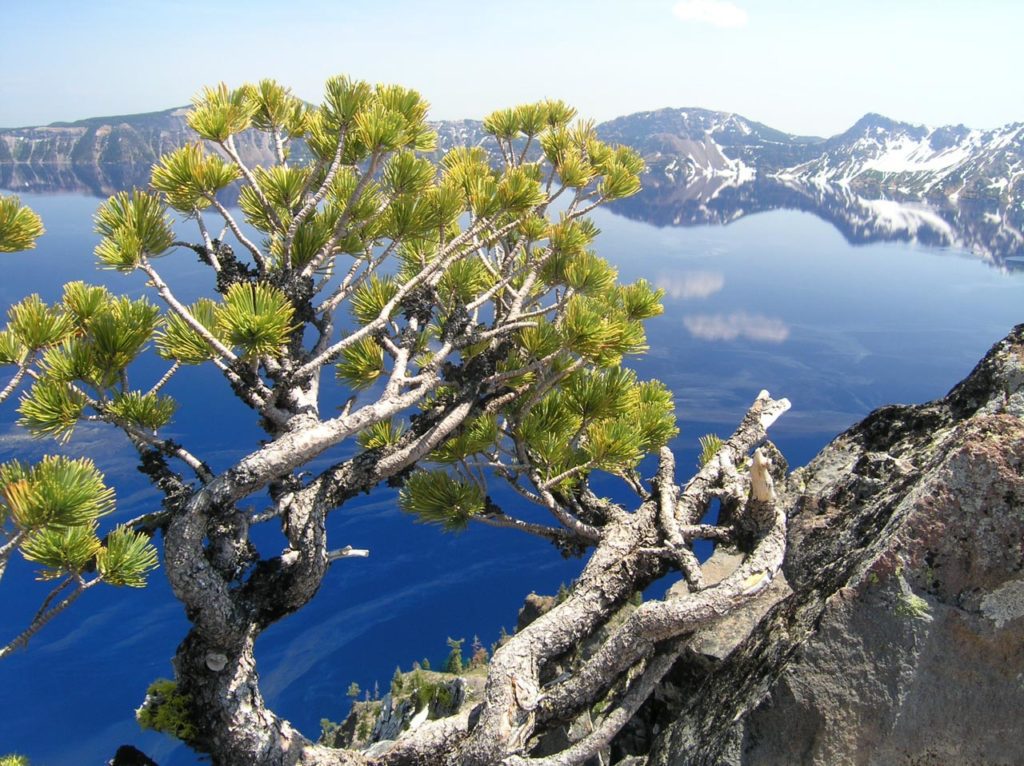
The Whitebark Pine is a subalpine tree species identified by its broad spreading crown and beautiful twisted branches. Facing the combined threats of habitat loss, climate change, the Mountain Pine Beetle, and Blister Rust, the Whitebark Pine’s BC population has been in decline for several years.
Because this species is not of commercial value, getting the tree recognized as endangered was challenging when researchers first tried to call attention to the issue. In 2012, it was added to the federal endangered species register under the Species at Risk Act.
This evergreen, coniferous tree can be found in southern BC, east of the Coast-Cascade Mountains. Considered a keystone species, it is an important food source for many birds and small mammals, particularly for Clark’s Nutcracker, which plays an essential role in seed dispersal.
Oregon Ash (Fraxinus latifolia)
Red-listed taxon in BC (endangered, threatened, or extirpated)
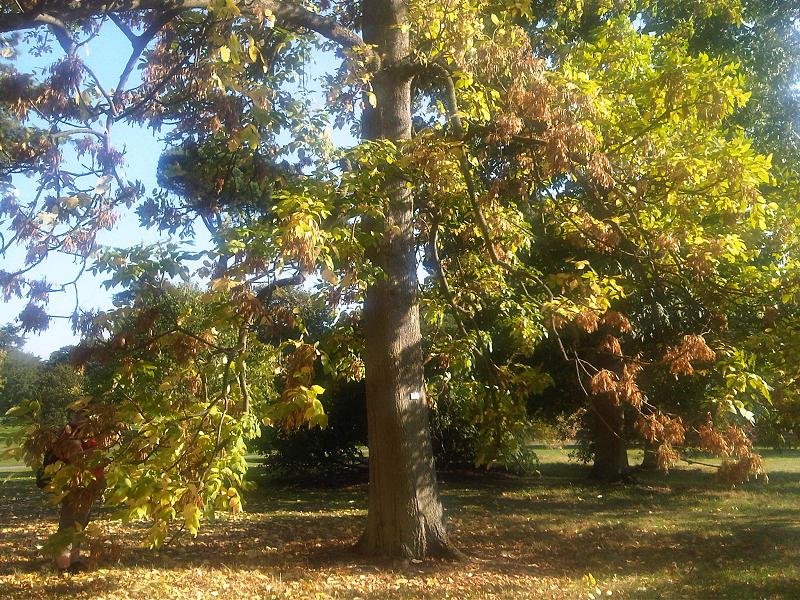
Oregon Ash is a large, magnificent, deciduous tree with a straight trunk and dense, narrow crown. Most abundant in the Columbia Basin and in the tributaries, streams, and valleys in western Oregon and southwest Washington, they are becoming increasingly rare throughout British Columbia. Prized for its beautiful symmetrical shape, rapid growth, and hardiness, Oregon Ash is the only timber ash in the Pacific Region.
Valued by Indigenous people of the Pacific Northwest, it was used for tool-making and medicinal purposes, including as a fever reducer and its effectiveness for cleaning wounds. Long-lived, Oregon Ash can also live for more than 250 years.
The species is endangered due to a small number of native populations lacking gene flow. Urban expansion and logging are also primary threats in the Cowichan and Alberni Valleys, where remnant populations remain. Fungal and viral pathogens also risk this species’ health and reproductive success.
Peach-leaf Willow (Salix amygdaloides)
Blue-listed taxon in BC (special concern)
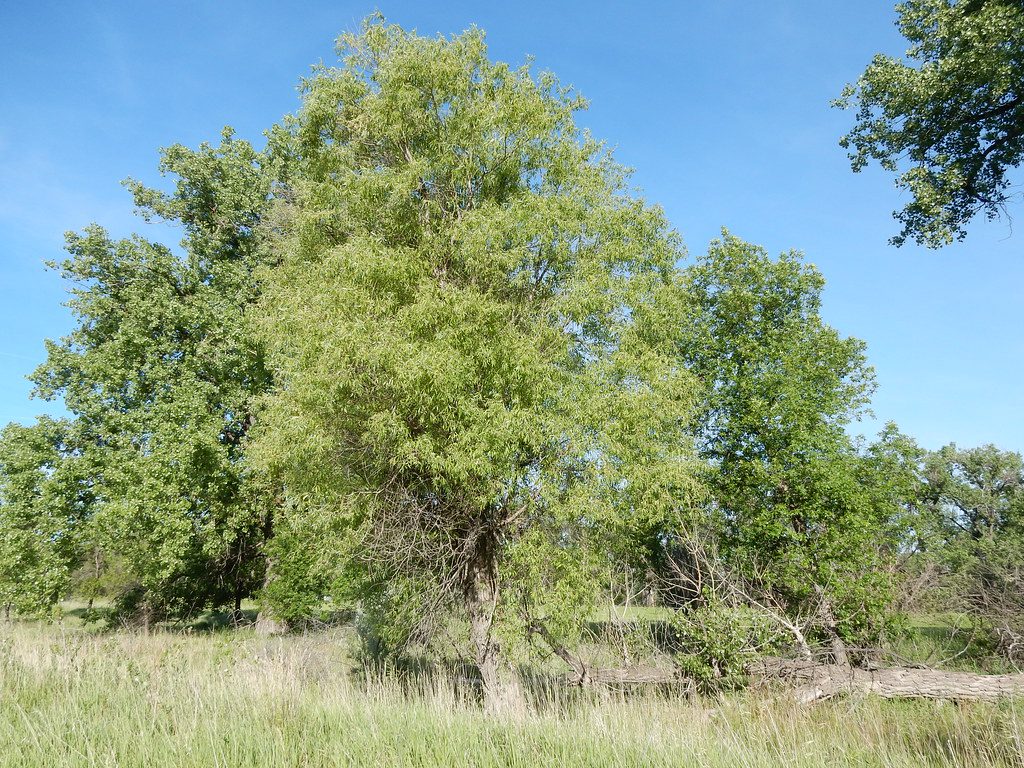
Photo: Matt Lavin
The Peach-leaf Willow is a fast-growing deciduous tree with beautiful weeping branches and fragrant white flowers that bloom in late spring. It occurs throughout North America, from southern Canada to Pennsylvania and west to Texas. In BC, it is only found in the Okanagan Valley at Osoyoos Lake and from Kelowna to Vernon.
This tree provides excellent habitat, nesting, food, and shelter for many birds, including raptors, waterfowl, and songbirds. Willow tree communities are known to provide habitat for Elk, Mule Deer, White-tailed Deer, and Moose.
Peach-leaf Willow is often found in wetlands and along the shoreline of rivers and streams – all habitats that have been disappearing over the last century.
Limber Pine (Pinus flexilis)
Blue-listed taxon in BC (special concern)
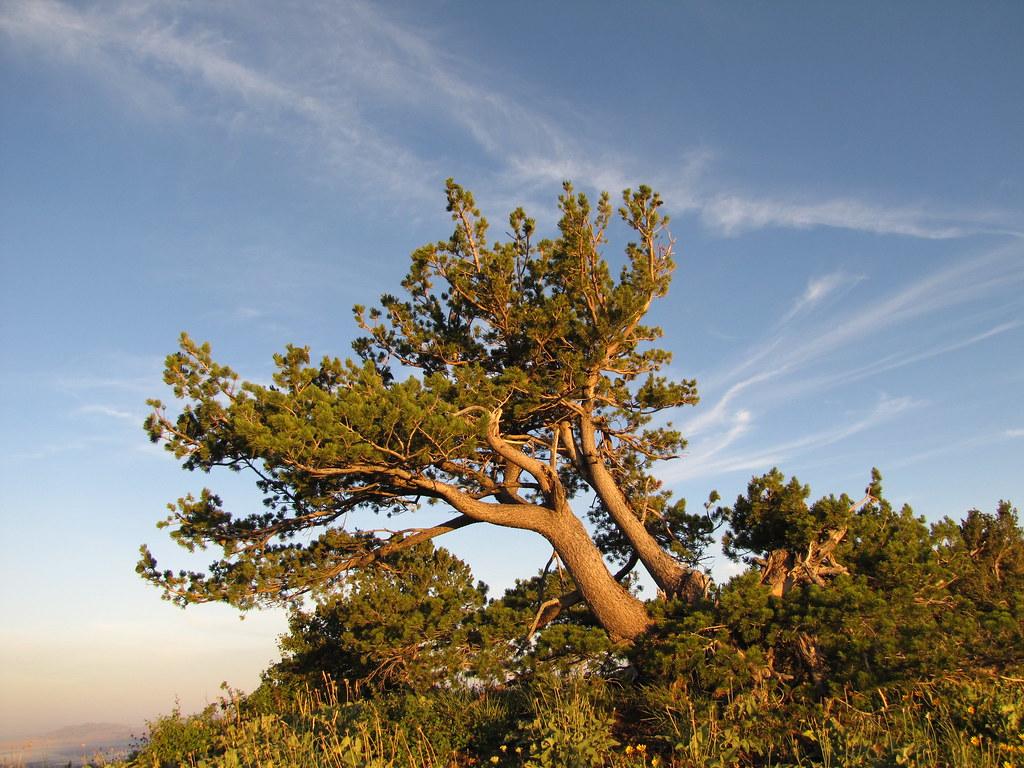
The Limber Pine is a slow-growing, long-lived tree species found in Alberta and British Columbia, extending as far south as Mexico. The oldest tree recorded in Alberta is nearly 700 years old.
Limber Pine is often found growing with Whitebark Pine, and, in fact, the two are hard to tell apart. Both species are threatened by the invasive fungal infection called White Pine Blister Rust. When the main stem in young trees becomes infected, it almost always results in tree death. Large trees can live with infections, but the fungus prevents the tree from reproducing effectively.
In 2009, surveys conducted by COSEWIC on Limber Pine in BC recorded that nearly 45% of trees were infected with Blister Rust, and 35% of those infected died in the coming years. An estimated two-thirds of mature individuals are expected to be lost in the next century.
Seaside Juniper (Juniperus maritima)
Yellow-listed taxon in BC – but considered G3 = vulnerable to extinction or extirpation under the Global Conservation Status
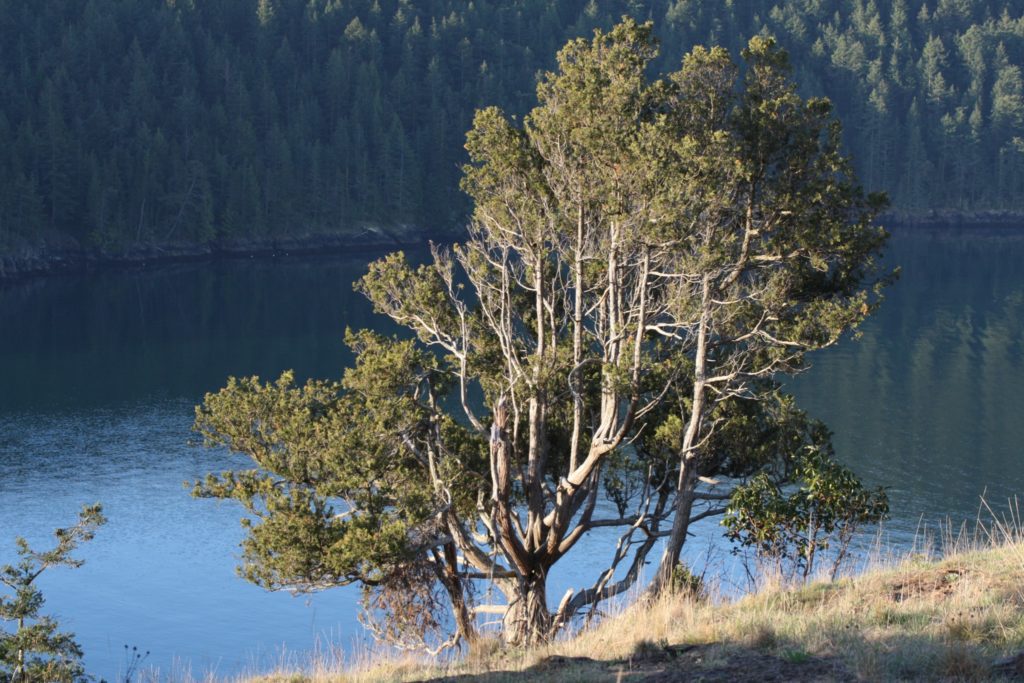
A recently discovered tree species endemic to the Salish Sea region. They are a unique juniper species as they have evolved physiological genes to facilitate growth in mild, wet environments, unlike many other similar species.
Frequently found on windswept points and small islets. A famous location at Squitty Bay features some old-growth seaside junipers over 400 years old. Considered threatened to vulnerable in BC as it occurs in a very restricted area over only 5000 km2 on southeast Vancouver Island. It is now known as the rarest North American juniper species.
A small population combined with the increasing threat of climate change risks causing further declines in this species over time. Higher summer temperatures are causing more extended drought periods, increased wildfire occurrence, and more significant numbers of threatening pests and diseases.
